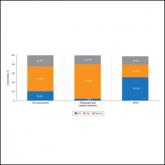Article

Perception of Executive Order on Medicare Pay for Advanced Practice Providers: A Study of Comments From Medical Professionals
- Author:
- Claire R. Stewart, BA
- Shari R. Lipner, MD, PhD
On October 3, 2019, President Donald Trump issued the Executive Order on Protecting and Improving Medicare for Our Nation’s Seniors, in which he...
Article

New Insights Into the Dermatology Residency Application Process Amid the COVID-19 Pandemic
- Author:
- Claire R. Stewart, BA
- Karen A. Chernoff, MD
- Horatio F. Wildman, MD
- Shari R. Lipner, MD, PhD
We propose that the coronavirus disease 2019 pandemic should serve as a call to action for dermatology to update and promote a more equitable,...
